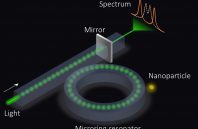Tweaking the design of microring sensors enhances their sensitivity without adding more implementation complexity.
Optical sensing is one of the most important applications of light science. It plays crucial roles in astronomy, environmental science, industry, and medical diagnoses.
Despite the variety of schemes used for optical sensing, they all share the same principle: The quantity to be measured must leave a “fingerprint” on the optical response of the system. The fingerprint can be its transmission, reflection or absorption. The stronger these effects are, the stronger the response of the system.
While this works well at the macroscopic level, measuring tiny, microscopic quantities that induce weak response is a challenging task. Researchers have developed techniques to overcome this difficulty and improve the sensitivity of their devices.

 (585) 768-2513
(585) 768-2513

